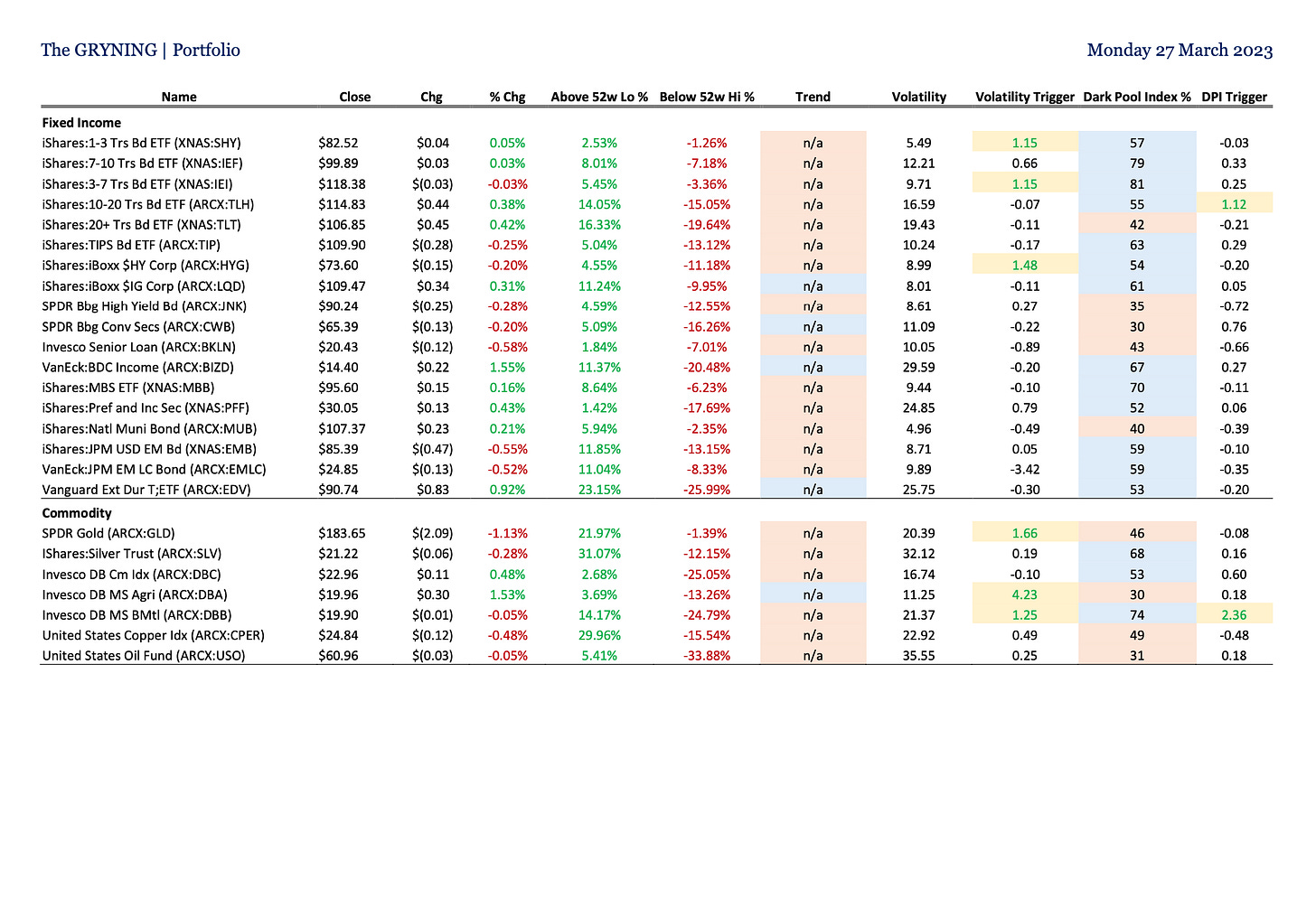As we start the week, let's take a look at a couple of charts.
Here's a look at the S&P 500 ...
After a volatile couple of weeks, stocks closed above the 200-day moving average (dark green line), and above the descending trendline (yellow line) that describes the bear market of last year.
The bounce back in stocks on Friday was largely sparked by news that the Treasury had called an emergency meeting with the Financial Stability Oversight Council. This group includes the Treasury Secretary and the Fed Chair, along with leaders from a host of regulatory agencies.
This reminds me of the emergency meeting Mnuchin (Treasury Secretary under Trump) called - President's Working Group on Financial Markets - in response to the collapse in stocks in December of 2018; oil was crashing and the yield curve had inverted for the first time in a decade.
This group was formed by Reagan following the 1987 crash. It's officially a smaller group than the Fin Stability group, consisting of the Treasury Secretary, the Fed Chair, and the heads of the SEC and CFTC. But it also is done in consultation with the leaders of major banks (they call in the banks).
As a whole, this group is better known as the "Plunge Protection Team."
So, stocks went into that 2018 Christmas having the worst December since the Great Depression. This group met the day after Christmas. That was the turning point. The bottom was in stocks that day.
What does the current environment have in common with December 2018? Bad Fed policy.
In December of 2018, in the face of clear warning signals, the Fed continued to mechanically raise rates for a ninth time, projected another two hikes for 2019, and Jay Powell said their quantitative tightening program was on "autopilot."
Stocks fell a further 8% in just four trading days - penalising a tone-deaf Fed.
It took Treasury intervention to stabilise and turn the tide for markets, and within days of that meeting, the Fed marched out, not just Jay Powell, but also two of his predecessors (Yellen and Bernanke), to walk back expectations of further Fed tightening - by July, they were cutting rates again.
Fast forward to today, and here we are again, in the face of clear warning signals, the Fed has proven tone-deaf, mechanically raising rates, and projecting another hike.
Again, we have an emergency meeting called by the Treasury.
How does the bond market see this resolving?
As of yesterday’s close, the 10-year Treasury yield is now 163 basis points BELOW the Fed Funds rate - it historically trades about 90 basis points (on average) ABOVE the Fed Funds.
As you can see in the chart above, this dynamic tends to resolve in rate cuts.
If you're looking for a Technical addition to go along with my daily macro notes, please consider becoming a member of The GRYNING Times.








